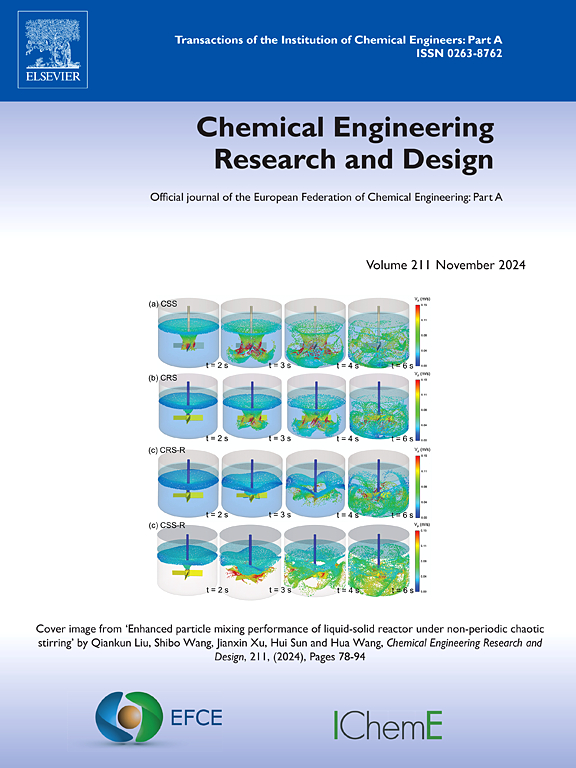Life cycle assessment, kinetic, and isothermic studies of grape stalks for Zn(II) biosorption: From waste to resource
IF 3.7
3区 工程技术
Q2 ENGINEERING, CHEMICAL
引用次数: 0
Abstract
This study investigates the application of grape stalks, a byproduct of winemaking, as an effective biosorbent for removing zinc ions from water. The research addresses the challenges of heavy metal contamination while promoting sustainable waste management. Optimization of the biosorption process was conducted using a Box-Behnken design within the framework of Response Surface Methodology, focusing on the influence of variables such as biosorbent dosage, pH, contact time, and initial Zn(II) concentration. The experimental results demonstrated that optimal biosorption efficiency (up to 99.38 %) was achieved at pH 8 and higher dosages of biosorbent. Adsorption kinetics aligned closely with the pseudo-second-order model, suggesting chemisorption as the governing mechanism. The equilibrium data fits well with the Langmuir isotherm, revealing a maximum adsorption capacity of 238.1 mg/g. A Life Cycle Assessment highlighted the environmental trade-offs, favoring a scenario that balanced high Zn(II) removal efficiency with lower resource consumption. The findings demonstrate the viability of grape stalks as an eco-friendly and cost-effective solution for zinc ion remediation, supporting circular economy principles in the wine industry and promoting advancements in sustainable wastewater treatment.
求助全文
约1分钟内获得全文
求助全文
来源期刊

Chemical Engineering Research & Design
工程技术-工程:化工
CiteScore
6.10
自引率
7.70%
发文量
623
审稿时长
42 days
期刊介绍:
ChERD aims to be the principal international journal for publication of high quality, original papers in chemical engineering.
Papers showing how research results can be used in chemical engineering design, and accounts of experimental or theoretical research work bringing new perspectives to established principles, highlighting unsolved problems or indicating directions for future research, are particularly welcome. Contributions that deal with new developments in plant or processes and that can be given quantitative expression are encouraged. The journal is especially interested in papers that extend the boundaries of traditional chemical engineering.
 求助内容:
求助内容: 应助结果提醒方式:
应助结果提醒方式:


